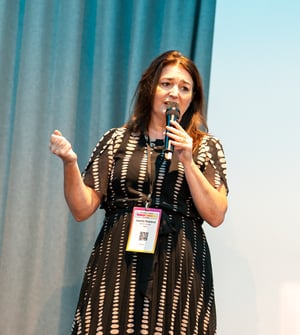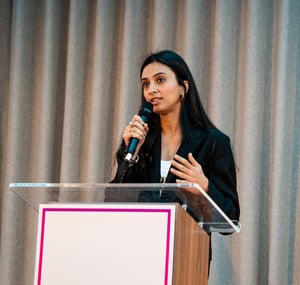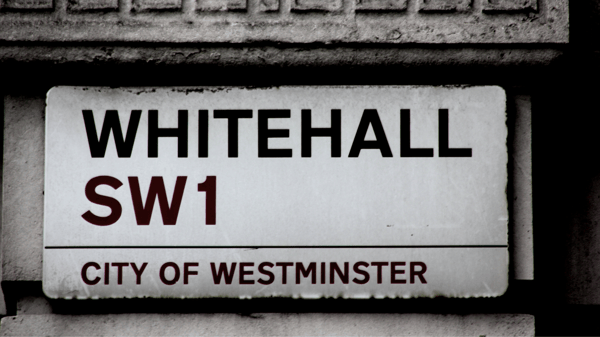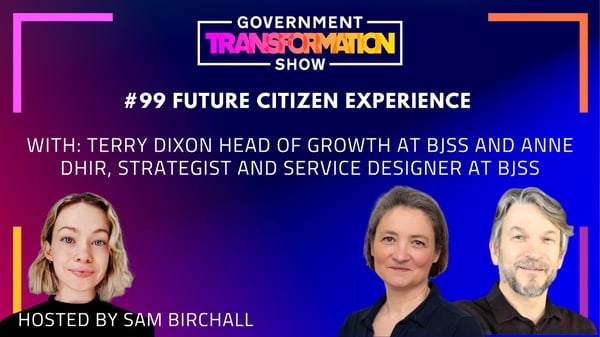Setting the pace for world class public services
Rapid technological progress and lifestyle trends means citizens now expect more seamless, personalised government and public sector services. So how can Senior Civil Servants make this a reality?
At the latest Government Transformation Summit, Joanna Rowland, Director General, Transformation at HMRC, Gulsanna Mamediieva, a former Director General at the Ministry of Digital Transformation of Ukraine, and two citizen experience experts from BJSS, tackled this question - focusing on greater citizen centricity.
Closing the gap
“Nowadays we live our lives around convenience; you can order something on your smartphone and it will be waiting for you at home by the time you're back. Public services need to follow suit,” said Joanna Rowland, Director General, Transformation at HMRC. She referred to this as the expectation gap - the closing of which will “set the pace for world class public services.”
To do that “we've got to think about how citizens live and make our services fit with their lifestyle, not with our processes,” Rowland argued. “That's our biggest challenge as we've moved forward into digital enabled customer services and I don't think we're ready for it. We've got some brilliant people, we’ve certainly got some brilliant tech but what we're definitely falling short on is expectations.”
fit with their lifestyle, not with our processes,” Rowland argued. “That's our biggest challenge as we've moved forward into digital enabled customer services and I don't think we're ready for it. We've got some brilliant people, we’ve certainly got some brilliant tech but what we're definitely falling short on is expectations.”
In setting out how government organisations can close this expectation gap, Rowland said it's important to start tracking expectations versus delivery. “How many of you are really monitoring the expectation versus your service? It's time for the public sector to start getting serious about this.”
Second is to manage citizen expectations; a crucial factor, Rowland argued, in ensuring that government service transformation is both ambitious and deliverable. “Let’s get into that re-contracting,” she said.
By far the most important factor, however, is the need for internal cultural change. To put it simply: “We've just got to do stuff differently,” Rowland said. “Reimagining how our services can fit into citizens' lives is really important - but that requires us to change ourselves.”
She continued: “How much are we designing that isn't actually that different from today - and how are we getting that diversity of thought so as to not be so hard coded? Too often, we're starting with tech and too often we are bending that tech to work in the same way.”
HMRC recently made their child benefits process digital. Before this it took at least six weeks to submit and process physical forms - now it takes 10 minutes and the money is provided in three days. “We used to think that going digital was putting a PDF online, but to really go digital we had to rethink the whole system, including factors like how we get to proof of the child,” Rowland explained.
Underpinning this all is the need to break away from siloed thinking in government. “We need multifunctional teams, all with the common aim of genuine service transformation. If we are not operating with diversity in our own structures, how on earth are we going to get end-to-end design for citizens?”
Designing for life events
A key takeaway from the day was a need to deliver citizen-centric services and design around life events rather than departmental needs.
This was exemplified in a keynote speech by Gulsanna Mamediieva, a former Director General at the Ministry of Digital Transformation of Ukraine, where she spoke about the country’s e-governance app, Diia. Launched in 2020, the app is a one-stop shop for government services. Following the Russian invasion of Ukraine, it enabled vital, seamless access to essential documents for citizens — ranging from national IDs and passports to Covid certificates and pension documents.
When TV towers were destroyed during the full-scale invasion, Diia TV and Radio was established to provide uninterrupted access to information. “Using this feature, the Ukrainian population has been able to keep up with all the news - they were even able to watch Eurovision through the platform,” Mamediieva said. 
There are currently 20 million people using Diia to access a multitude of government services through their smartphone. "It has allowed the Ukrainian government to prioritise digital-first public service delivery during times of unprecedented crisis," Mamediieva explained. “Convenient, invisible and human-centric - this is what Diia is about.”
Beyond convenience, Diia is also helping to give people a voice at a time of extreme uncertainty. It is aiding individuals in asserting their identities and giving them the opportunity, through a portal in the app, to vote on local initiatives and decisions. “People are more empowered than ever," Mamediieva said.
Future citizen experience
Terry Dixon, Head of Growth at SPARCK (the design and innovation arm of BJSS) and Anne Dhir, Strategist and Service Designer at SPARCK, hosted a discussion table during the Summit addressing future citizen needs.
Speaking afterwards to Government Transformation Magazine, Dihr said citizens participating in decision-making and policy shaping was a major point of interest for Civil Servants. "Enabling citizens to bring their lived experiences is the linchpin to delivering that citizen-centricity."
She added: “We’ve probably underplayed the impact of emotions in designing for citizen success beyond service interactions. Applying for a passport in an emergency situation is going to trigger different emotions than if you're applying for one for a business trip. Services that are designed in a very transactional way don’t always take those experiences into consideration, which can create barriers to access.”
Dixon talked about the potential for AI to enhance the citizen experience but warns about the dangers of "pushing it too far into hyper-personalisation", which is where citizens start to worry about where their data is going. “There are a whole load of ethical questions around using AI to deliver hyper-personalised services. It's also very costly so it might not actually deliver the most value.
Ultimately, he said "public service design and delivery needs to be about understanding what the citizen is trying to achieve and putting them at the centre.”
The biggest potential for public service transformation, Dixon argued, hinges on the ability for government to start implementing a more agile, start-up mentality in policy creation. “It needs to involve citizen needs right at the top so that it can flow down into everything and this needs to be fully representative of the whole population.
“If you can gear government around citizen needs at a more senior level, the opportunities are incredible."

By Sam Birchall
Sam is the senior reporter at Government Transformation Magazine.Also Read
- NHS unveils redesigned homepage to meet evolving digital health needs
- Transforming citizen experience: Innovation, strategy and collaboration in public services
- Reforming planning technology: the key to unlocking growth
- Canada sets out 'Digital Ambition' with focus on smarter, secure, and citizen-centric services




